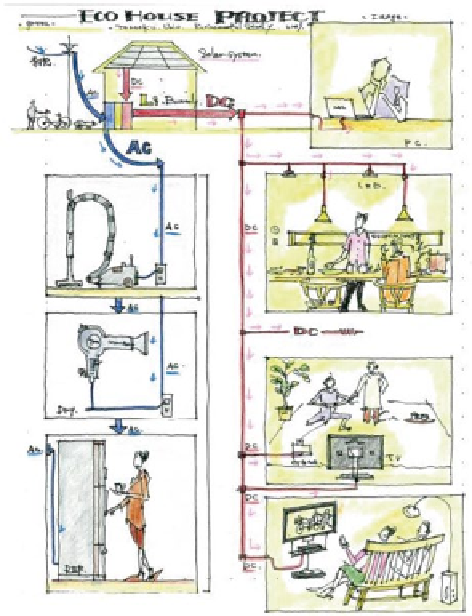Environmental Engineering Reference
In-Depth Information
Fig. 7.3
Vision of dual (AC
and DC) supply to household
and uses. (GSES
2012
)
AC grid, and then secondly from the AC grid through the transformer to the DC-
using device. By maximising the usages of electricity in DC form, and providing
that direct from the renewable energy DC supply, two conversion inefficiencies
can be removed. To expand the usage of DC, an internal lighting system has been
installed using a 300 V system connected with LED lights. Where lower DC volt-
age is required this can be converted from DC 300 V to the appropriate voltage
(for example such as DC 24 V, DC 12 V, DC 5 V) by a DC/DC converter. By using
high-voltage DC supply, which supplies power with minimal energy conversion,
energy use is made highly efficient. For universities and office buildings, high volt-
age would be advantageous. However, the home allows selection of the appropriate
voltage. Currently, solar panels are installed in houses; they can easily generate
DC power at home using solar power (sunshine). In addition, the home has many
electronics goods operating by DC. (Ex. Computer, Audio, TV, LED lighting, mo-
bile electronics, wearable electronics, etc.) It is not necessary to use centralized
power generation which burns fossil fuels or nuclear power that requires transmis-
sion lines. Power generation is possible in the home by small, distributed generators
using natural energy. The current situation is no longer the same as in the late 1880s
“War of Currents”. Both DC (made in the home) or AC (purchased from the power
company) can be used as illustrated in Fig.
7.3
.

